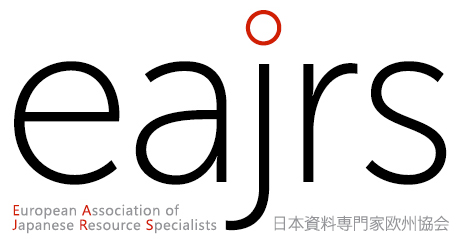![]() Kuniko Yamada McVey
Kuniko Yamada McVey
Harvard University. Harvard-Yenching Library. Librarian for the Japanese Collection
From hinagata to isho : opening Japanese design catalogs digitally
Harvard-Yenching Library holds a few hundred volumes of Japanese design catalogs from the late Edo period to the early 20th century. These were originally called Hinagata, then Ishō, or Zuan in the modern era. Typical contents of traditional Hinagata include kimono patterns, architectural decorations, and details, weaving patterns. Many are hand-drawn in color. They were used for practical purposes, such as kimono merchants taking orders from clients. After the Meiji restoration in 1868 when Japan opened to the outside world, the new government promoted the export of Japanese craft goods such as pottery, lacquer ware, textiles to earn the currency necessary for building the modern nation. These goods were well received in Europe where "Japonisme" was already popular. Many designers for these craft goods were trained in Kyoto and publishers there produced color woodblock print design catalogs introducing these designers’ works.
The library digitized 88 volumes of these catalogs in 2016. The images were IIIF (International Image Interoperability Framework) compliant following Harvard’s policy. These digital images are presented on the Mirador platform, the newly introduced system where images from other institutions can be displayed side-by-side utilizing IIIF protocol. This new digital platform encourages active explorations of these visually significant materials.
I would like to present a brief history of Japanese visual design catalogs from the early modern to the modern period, utilizing Yenching Library’s digitized collection while drawing relevant images from other institutions for reference and comparison.
Most of the digitized catalogs are gifts once owned and bound by Earnest Goodrich Stillman (1884-1949), Harvard class of 1908. Stillman traveled to Japan in 1905 and collected Japanese art and books throughout his life. Many of his art objects and books are now held in Harvard’s libraries and museums.
雛形から意匠まで、電子の目で辿る日本のデザイン見本帖
ハーバード・イェンチン図書館では、江戸時代後期から20世紀の初頭に製作された数百冊の様々なデザイン見本帖を所蔵している。もともと「雛形」と呼ばれていたが、近代になって「意匠」とか「図案」と称されるようになった。伝統的な雛形見本帖の典型的内容は、着物の模様、建築物の内装や外装のデザイン、織物の模様などで、彩色手描きのものが多い。これらは実用に供された。例えば、着物商人が顧客の注文を取る場合などに。1868年の明治維新以降、外国に門戸を開いた新政府は、近代国家を建設するために必要な外貨を稼ぐために、陶器、漆器や絹織物などの工芸品の輸出を促進した。これらの工芸品は、すでに「ジャポニズム」が人気であったヨーロッパで、よく受け入れられた。多くの図案家達が、京都で育成され、地元の出版社が彼らの作品見本を、彩色木版画で出版した。
イェンチン図書館は昨年こうした見本帖を88冊を、IIIF(International Image Interoperability Framework)に合う規格でデジタル化した。これらの電子画像は昨年導入されたMiradorというプラットフォームで、提供される。Mirador ではハーバード図書館の電子画像だけでなく、世界中のIIIFを採用した機関の電子画像を、ハーバードのものと同一画面で見ることができる。Miradorはこうした視覚的に重要な資料の積極的な探求を促している。
私の発表では、日本のデザイン見本帖の18世紀から20世紀初頭にかけての簡略な歴史を、イェンチン図書館のデジタル化画像を使いながらたどる一方、他機関の関連ある画像もMirador の機能を活用して比較参照していきたい。
今回電子化された見本帖の多くは、ハーバード卒業生(1908年卒)アーネスト・スティルマン(1884-1949)が寄贈したものだ。彼は1905年の日本訪問以来、日本の美術品や関連資料の収集を生涯続け、その収集品の多くが、母校の図書館や美術館に寄贈された。
